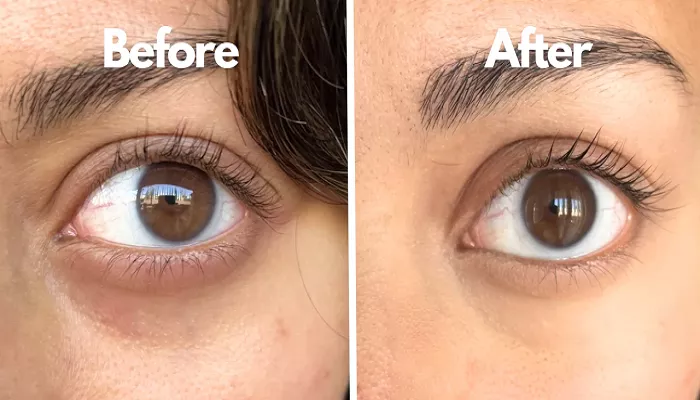Dark circles under the eyes are a common concern for many individuals, often caused by aging, genetics, lifestyle habits, and environmental factors. Fortunately, modern non-surgical facial rejuvenation treatments offer safe and effective solutions. This article explores top-rated under-eye dark circle treatments using clear and simple language, ideal for health-conscious readers familiar with beauty care.
What is Under-Eye Dark Circles
Causes of Dark Circles
It’s important to understand the causes of dark circles before choosing a treatment:
Genetics
Inherited traits like thin skin or increased melanin can cause noticeable dark circles.
Aging
As skin ages, collagen production decreases, leading to thinner skin and visible blood vessels under the eyes.
Lifestyle Habits
Lack of sleep, poor hydration, and exposure to blue light can worsen the appearance of dark circles.
Sun Exposure
UV rays increase melanin production, deepening pigmentation around the eyes.
Allergies and Congestion
These can cause blood vessels under the eyes to swell, leading to a darker appearance.
Non-Surgical Treatments for Under-Eye Dark Circles
1. Topical Treatments
Vitamin C Serums
Vitamin C brightens skin and stimulates collagen production. Daily application can reduce pigmentation and improve texture.
Retinoids
These promote cell turnover and thicken the skin, making blood vessels less visible.
Peptides
Peptides support collagen production and improve skin firmness around the eyes.
Caffeine Creams
Caffeine helps shrink blood vessels and reduce puffiness, making eyes look more refreshed.
2. Chemical Peels
Chemical peels use acids like glycolic or lactic acid to remove dead skin cells and promote regeneration. They help lighten dark pigmentation under the eyes. Mild peels are safe when performed by a licensed professional.
3. Laser Therapy
Laser treatments target pigmented areas and stimulate collagen growth. Options include:
IPL (Intense Pulsed Light) – Treats pigmentation and broken capillaries.
Fraxel Laser – Improves skin texture and builds collagen.
Pulsed Dye Laser – Reduces blood vessels contributing to discoloration.
Q-Switched Nd:YAG Laser – Targets melanin to fade dark spots.
Laser procedures require minimal downtime but should always be done by trained practitioners.
4. Microneedling
Microneedling uses tiny needles to create micro-injuries that stimulate collagen and elastin. It strengthens the under-eye skin, making discoloration less visible. For even better results, many combine microneedling with PRP (Platelet-Rich Plasma) therapy.
5. Platelet-Rich Plasma (PRP) Therapy
PRP therapy involves injecting your own blood platelets under the eyes. These release growth factors that regenerate skin, improve texture, and reduce pigmentation. PRP is a natural solution for rejuvenating tired eyes.
6. Dermal Fillers
Hyaluronic acid fillers restore volume to hollow under-eye areas, minimizing shadowing that makes dark circles look worse. Fillers produce instant results and can last up to a year. Only licensed injectors should perform this treatment.
7. Radiofrequency Microneedling (e.g., Morpheus8)
This technique combines microneedling with radiofrequency energy to tighten skin and boost collagen. It treats sagging, wrinkles, and dark circles at the same time with minimal discomfort and downtime.
8. Carboxytherapy
Carboxytherapy introduces carbon dioxide beneath the skin to increase blood flow and oxygenation. This improves skin color and reduces puffiness under the eyes. It’s a quick procedure with minimal side effects.
9. High-Intensity Focused Ultrasound (HIFU)
HIFU uses sound waves to heat deeper layers of skin, stimulating natural collagen growth. It firms the under-eye skin and reduces signs of aging without needles or downtime.
10. Skin Boosters
Skin boosters are small injections of hyaluronic acid that hydrate and revitalize the skin. They improve texture, firmness, and radiance, helping reduce the tired look caused by dark circles.
How to Choose the Right Treatment
Choosing the best treatment depends on the root cause of your dark circles:
If pigmentation is the issue:
Try vitamin C, chemical peels, or laser treatments.
If skin is thinning or sagging:
Microneedling, PRP, and radiofrequency can improve strength and texture.
If volume loss is noticeable:
Dermal fillers provide instant correction and support.
If poor blood circulation is suspected:
Carboxytherapy or caffeine creams can help.
Always consult with a licensed medical professional who can assess your condition and recommend the best combination of treatments.
Additional Lifestyle Tips
For long-lasting results, combine professional treatments with healthy habits:
Sleep Well
Aim for 7–9 hours of sleep each night to prevent tired eyes.
Stay Hydrated
Drink enough water daily to keep skin plump and hydrated.
Use Sunscreen
Protect your eye area with SPF 30+ sunscreen to prevent further pigmentation.
Eat a Balanced Diet
Include vitamins C, E, and K for skin health.
Manage Allergies
Use antihistamines or nasal sprays to reduce puffiness and discoloration.
The Role of Consistency
While non-surgical treatments are powerful, consistency is key. Topical products need time to work. In-office procedures may require multiple sessions for best results. Following up with maintenance treatments and proper skincare helps prolong the effects.
Professional Advice Matters
Everyone’s skin is different. What works for one person may not be ideal for another. That’s why professional consultation is essential. Dermatologists and aesthetic doctors can guide you toward the safest and most effective plan.
Summary
Dark circles no longer have to be a permanent issue. Thanks to innovations in non-surgical facial rejuvenation, multiple treatments are now available that are safe, effective, and minimally invasive. Whether you prefer a simple cream or a more advanced solution like PRP or fillers, there is an option suited to your needs.
By combining the right treatments with good habits, you can restore brightness to your eyes and confidence to your appearance.
Related topics:
What Is Wavefront Laser Eye Surgery? A Complete Guide
Is Laser Eye Surgery Covered by Private Health Insurance?
Why Is Laser Eye Surgery So Expensive?


